Matchbox Caterpillar Construction Zone

- North American release in January 2000
- European release in 2000
- Never released in Japan
- Developed by Realtime Associates
Honk! Honk!

The Game Boy was going through a frenzy of popularity in 2000. What do I mean by a frenzy? People were buying a large number of games for the system, making it viable to develop more games for the system. Any type of game could find an audience. During the continuing success of Pokémon and after the release of the Game Boy Color, it was a good deal for a developer to grab a franchise, make a Game Boy game with Game Boy Color support (a black cartridge) and just see what sticks. To me the best example of this era of 1999–2000 Game Boy Color games is best represented by Matchbox Caterpillar Construction Zone. Why? Because I friggin’ bought the game at retail with hard-earned teenager money, that’s why! For what reason did I buy this game? I still don’t know to this day. But I’m familiar with it and so I can talk about it. It’s not the only game you could use to represent this era but for me the boomtown mentality of 1999–2000 on Game Boy is best portrayed by Matchbox Caterpillar Construction Zone.
Humble Roots
Construction Zone was originally a PC game. A kids game about driving large machinery, it came with a set of controls you could stick on top of your keyboard to pretend you were in a big truck, or a big bulldozer, or whatever!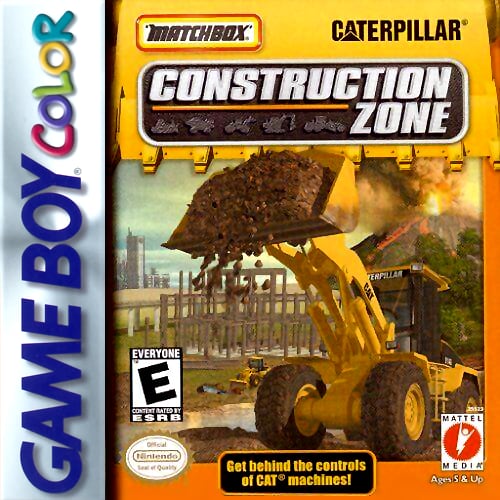
The joystick really defines what these types of games hoped to achieve. It looks good in the ad, and above all it’s meant to be dead simple to set up for kids. The controller mechanically connects to your computer keyboard, so movements on the controller move levers that push keyboard buttons. No need to install drivers or mess with DLLs to configure this Windows 95 peripheral! The whole project feels more like a toy than proper software. Makes sense when the game has the name Matchbox in the title.
So you had this PC toy coming out and somehow it made financial sense to have a Game Boy version come out as well. I find it fascinating that nine people are credited with making a goddamn construction simulator on Game Boy. Who are these people? What do they think of their game? I can’t help but wonder: How much time did they spend making this game? Some of those credits are for executive producers, sure, but the game had three programmers and a sound person. They probably worked on this project for months. As an aside, some of the personnel on this game also worked on Heroes of Might & Magic on Game Boy Color. I guess assembly programmers versed in Game Boy minutia were not around every corner.
The Down Low
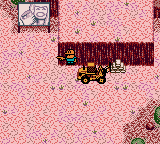
There is not a lot to say about Matchbox Caterpillar Construction Zone. You can’t lose, you can’t get screwed, you just have to perform the very simple actions the game requires and that’s it. You could expect a sandbox where you get to do whatever you want with the big machinery but the game is frustratingly story-driven. There’s no way to cause any fun mayhem. You just follow the steps as they are presented by the game. One thing that caught my eye is how little text there is. Since this is ostensibly a game for kids, you’d expect a healthy dose of tutorials. This is not the case. The game uses the very ingenious device of a little foreman simply pointing you in the right direction when you’ve finished a task.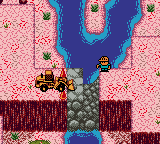
Why go to all the trouble of animating this little character when a text field would have been much simpler? I think it’s a case of building something without text so you don’t have to translate it later. I found it interesting. It gives the game personality and it’s fun to see the little foreman disapprove when you do the wrong thing. It shows how cheapo releases can still show some amount of effort and ingenuity. In terms of mistakes and missed opportunities I think the game suffers the most from its ginormous maps. You often get lost and with the complicated tank controls it’s hard to move around. You should have tank controls to make you feel like you’re operating very big machines but these controls are jerky so you never feel like you’re driving a big vehicle. It would have been better if you had a control scheme based on large archs to maneuver the machines around tight corners and smaller areas. To top it off they maybe could have included an HP meter to limit the number of times you could drive into stuff. I feel like that’s probably the main concern when operating a bulldozer; don’t bump into things. Here your main concern is not to get lost on the way to the fourth rock you need to move.
Realtime Associates, Inc.
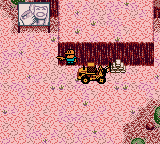
Ultimately, Matchbox Caterpillar Construction Zone is terribly unimportant. The company’s own website lists the game under the wrong name, for chrissake. Realtime Associates’ history is interesting though: they were created out of a bunch of Intellivision developers and made the NES port of Maniac Mansion and Bug! for the Sega Saturn, along with a dizzying number of licensed games. Go read more about their history on their About Page. To me, they’ll always be the developer of Out of Gas for Game Boy, which I’ll get to in due time.
Conclusion
I think I’ve already proven with both Heroes of Might & Magic that I’m not scared to highlight really surprising games. Construction Zone is such a game. It’s easy crap for kids, but it shows that in 1999–2000 there was a market for those games. Compare what was released for Game Boy Color in 2000 with was released for Game Boy in 1997. See a difference? In 1997, the Game Boy was winding down because nobody cared anymore. In 2000, developers were still trying to reap the spoils of a tsunami that reinvigorated the Game Boy: Pokémon. That’s why Matchbox Caterpillar Construction Zone was made and that’s why it’s essential. It shows you a gold rush in full swing.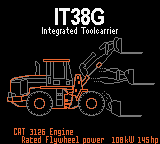
This article was first published on the .
This article was last modified on the .